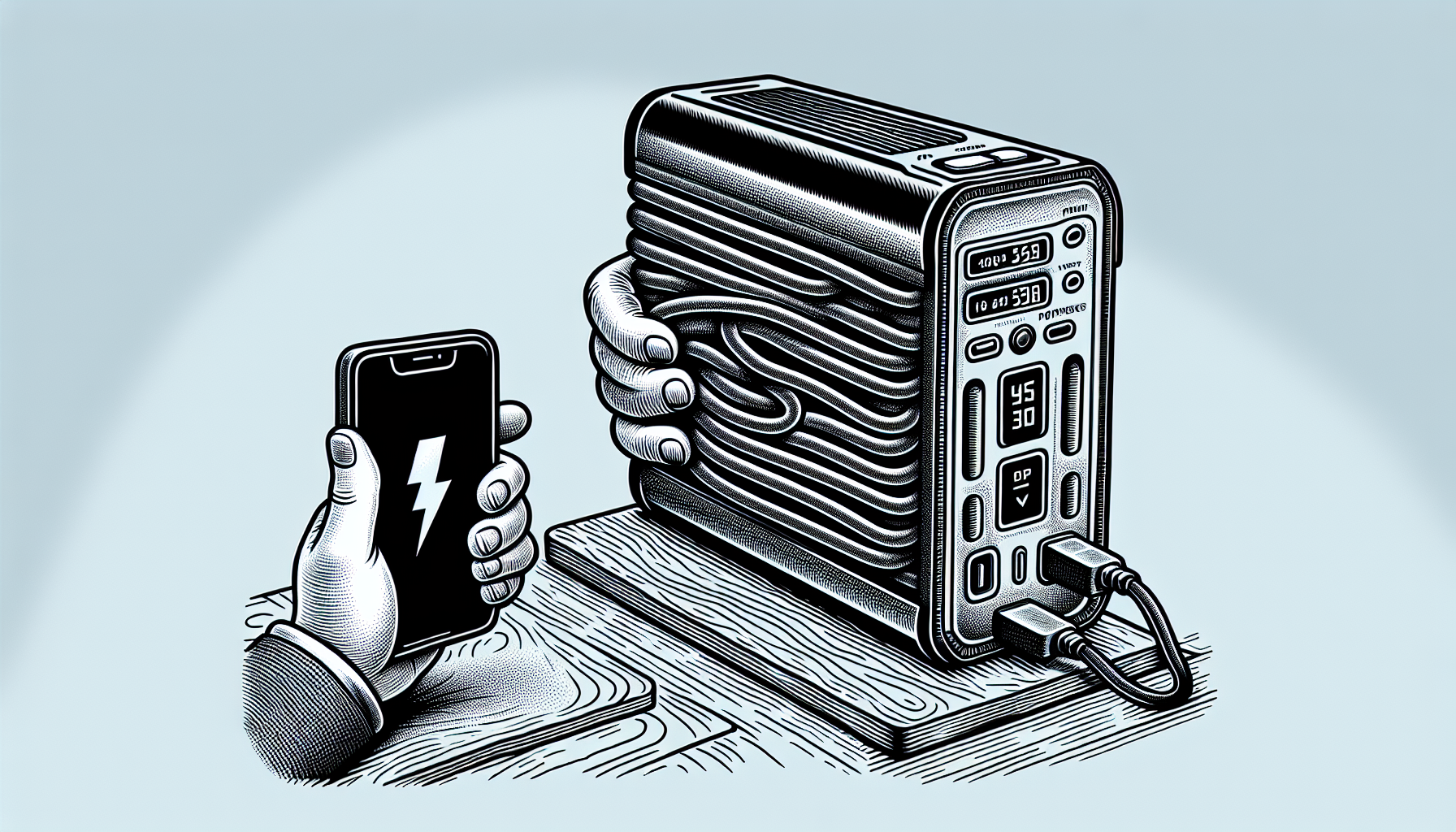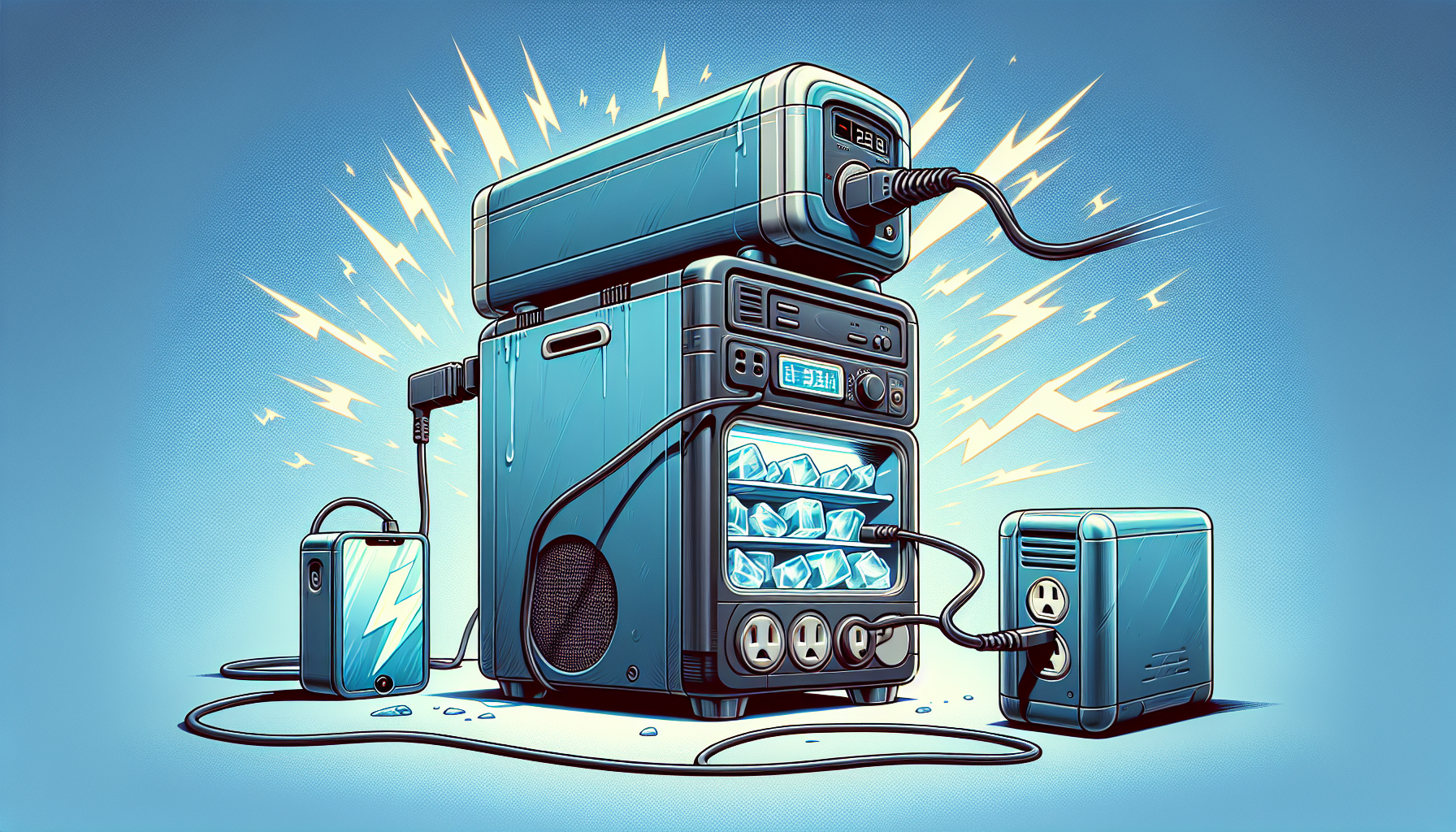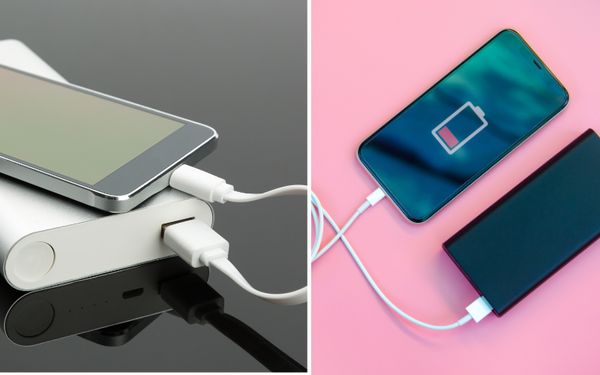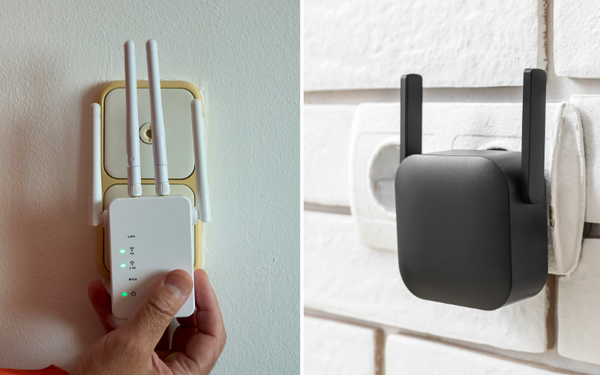What is the difference between a power bank and a portable power station? In short, power banks are for small gadgets and quick charges, while portable power stations handle larger devices and longer uses. Read on for more details.
Key Takeaways
- Power banks are compact, lightweight devices designed to charge smaller electronics like smartphones and tablets on the go, while portable power stations are larger and can power bigger appliances such as TVs and refrigerators.
- Portable power stations offer more versatility with multiple recharging options, including AC outlets, solar panels, and carports, making them suitable for extended outdoor use or as backup power sources during outages.
- Choosing the right portable power solution depends on specific needs: power banks are ideal for daily commutes and small electronics, while portable power stations are better for outdoor adventures and emergency home backup power.
What Is a Power Bank?

A power bank is a compact, portable device designed to store electrical energy and charge electronic devices via USB ports. Typically equipped with lithium-ion batteries, power banks offer a convenient solution for charging smartphones, tablets, laptops, and other USB-powered gadgets on the go. Whether you’re on a daily commute or a short trip, these handy devices ensure your essential electronics remain charged.
Power banks are particularly popular for their ability to provide emergency power for smaller gadgets. Most models can handle multiple charges for devices like smartphones and wireless headphones, making them indispensable for anyone who relies heavily on their mobile devices. We’ll examine the primary reasons power banks are often selected for portable power requirements.
Portability and Convenience
One of the standout features of power banks is their portability. These compact and lightweight devices are designed to fit easily into your pocket or bag, making them ideal for:
- Daily commutes
- Short trips
- Music festivals
- Nights out
A power bank with a capacity of 6,000–10,000mAh can keep your smartphone and other small electronics charged without weighing you down.
Power banks often come equipped with multiple outputs, allowing you to charge multiple devices simultaneously. This means you can keep your smartphone, tablet, and other essential gadgets powered up, ensuring you’re never left without a charge.
The convenient, portable nature of power banks has made them a staple in our modern lifestyle.
Charging Capability
Power banks are designed to provide quick energy boosts to a variety of USB-powered devices. From smartphones and tablets to wireless headphones, these portable chargers can handle a range of small electronics, ensuring you’re always connected. Given their ability to simultaneously charge multiple devices, power banks are an excellent choice for those needing to keep various gadgets energized all day.
Many power banks come with additional features like wireless charging pads and USB-C ports, enhancing their versatility and convenience. Whether requiring a speedy phone top-up or a complete tablet charge, power banks present a dependable, efficient charging solution.
Battery Capacity
The battery capacity of a power bank is a crucial factor to consider when choosing the right model for your needs. Most power banks have capacities ranging from 10,000mAh to 20,000mAh, with some models reaching up to 27,000mAh or 100Wh. These capacities determine how many times you can charge your devices before needing to recharge the power bank itself.
However, bear in mind that actual capacity might be slightly less than the marketed figure, due to energy loss in the charging process. On average, you might need to apply a 40% discount to the claimed capacity to estimate real-world performance accurately. Despite this, power banks remain an invaluable tool for keeping your devices charged on the go.
Exploring Portable Power Stations

Portable power stations are a versatile and powerful alternative to traditional power banks. These devices, also known as stations and power banks, offer the following features:
- Store electrical energy in a built-in battery
- Can be recharged via wall sockets or solar panels
- Equipped with multiple outlets, including AC outlets, USB ports, and sometimes solar panel inputs
- Can power a wide range of devices, from laptops to mini-fridges.
Ideal for outdoor activities and emergency situations, portable power stations offer a reliable source of power when you’re off the grid. With higher capacities and more robust features compared to power banks, they are perfect for extended camping trips, RV use, or as a backup power source during power outages. We’ll analyze their main features, power output, and multifaceted uses.
Core Features
Portable power stations come with a variety of core features that make them highly versatile. Most models include multiple outlets, such as built-in AC outlets and USB ports, allowing you to charge several devices simultaneously. Additionally, many portable power stations have inputs for solar panels, providing an eco-friendly and sustainable recharging option for outdoor adventures.
Some key features of portable power stations include:
- Compact and portable design
- Multiple charging options (AC outlets, USB ports, DC ports)
- High capacity battery
- Solar panel compatibility
- Wireless charging capabilities
Armed with these key features, both portable power stations can cater to diverse power needs, from reenergizing crucial devices and power tools to fueling larger appliances during prolonged trips or emergencies.
Power Output and Capacity
The power output and capacity of portable power stations are significantly higher than those of power banks. Typically, these devices range from 200Wh to over 1000Wh, offering ample power for various applications. The capacity, measured in watt-hours (Wh), indicates how much electricity the station can store, with higher capacity models providing longer power supply durations.
Portable power stations can power a wide range of devices, including medium to large appliances like TVs, refrigerators, and even blenders. With output wattages ranging from 600 watts for small units to over 2000 watts for larger models, these stations are ideal for extended camping trips and power outages. For instance, the Togo Power 346Wh and the Anker 757 PowerHouse are excellent examples of high-capacity portable power stations suitable for various needs.
Versatility and Applications
Portable power stations’ adaptability allows them to fit a broad spectrum of applications. They are perfect for outdoor activities such as camping trips and RV use, providing power for gadgets like coolers, TVs, and electric stoves. Their large battery capacities ensure that you have enough power for extended periods, making your outdoor adventures more enjoyable and convenient.
In addition to their use in outdoor settings, portable power stations are also ideal for emergency backup power at home. They can keep essential household appliances like microwaves, air conditioners, and refrigerators running during power outages, providing peace of mind and ensuring that you remain comfortable and connected.
Key Differences Between Power Banks and Portable Power Stations
While both power banks and portable power stations serve the purpose of providing portable power, they differ significantly in terms of size, weight, device compatibility, and recharging options. Power banks are smaller, lightweight, and easy to carry, making them ideal for travel or long commutes, while portable power stations are larger and heavier due to their higher capacity.
Comprehending these key differences is fundamental in selecting the right portable power solution for your requirements. We’ll probe further into the specific characteristics that distinguish power banks from portable power stations, including weight and size, device compatibility, and recharging alternatives.
Weight and Size

Power banks are known for their compact size and lightweight design, making them easy to carry in a pocket or small bag. This portability is one of their main advantages, especially for users who need a quick and convenient way to charge their small devices on the go. However, their smaller size also means they have lower power capacity compared to portable power stations.
On the other hand, portable power stations have the following characteristics:
- They are larger and heavier due to their higher battery capacities.
- This might make them less convenient to carry around.
- However, their increased size allows them to store more energy and power larger appliances.
- This provides more flexibility and functionality for a wider range of applications.
Device Compatibility

Device compatibility is another crucial difference between power banks and portable power stations. The main purpose of power banks is to charge smaller electronics like smartphones, tablets, and laptops. They are designed to provide portable and convenient backup power for these devices. Their compact design and USB ports make them perfect for these types of devices, but they lack the capacity to power larger appliances.
In contrast, portable power stations can power a much broader range of power devices, including medium to large appliances like TVs, refrigerators, and blenders. This makes them ideal for scenarios where you need to keep multiple or larger devices running, such as during camping trips or power outages. When considering portable power station vs traditional power stations, the versatility and convenience of portable options become apparent.
Recharging Options
When it comes to recharging options, portable power stations offer more versatility compared to power banks. These devices can be recharged using:
- AC outlets
- Solar panels
- Carports
- Generators
This variety of recharging methods makes portable power stations suitable for both indoor and outdoor use, providing a reliable power source in various scenarios.
Power banks, on the other hand, are typically recharged via USB cables connected to an adapter or computer. While this is convenient for daily use, it limits their recharging options compared to the more versatile portable power stations.
Choosing the Right Portable Power Solution
Choosing the right portable power solution depends on your specific needs, device compatibility, and intended usage scenarios. Whether you need to charge small electronics during daily commutes, power gadgets during outdoor adventures, or keep essential devices running during power outages, understanding the differences between power banks and portable power stations is crucial.
We’ll look into the optimal portable power solutions tailored to different needs and situations, including small electronics, outdoor ventures, and home backup power.
For Small Electronics
For those who need to charge small electronics like smartphones, tablets, and wireless headphones during daily commutes or short trips, power banks are the ideal solution. With capacities typically ranging from 10,000mAh to 20,000mAh, power banks can provide multiple charges for your devices. A 10,000mAh power bank, for example, can offer up to three full charges for a modern smartphone.
These compact, transportable chargers are excellent for maintaining your vital devices powered all day, ensuring connectivity and productivity regardless of your location.
For Outdoor Adventures

If you’re planning an extended outdoor adventure, such as a camping trip or an off-grid expedition, a portable power station is the way to go. With higher capacities and multiple outlets, these devices can power larger electronics like coolers, TVs, and electric stoves, enhancing your outdoor experience.
Portable power stations are designed to last longer, making them ideal for extended periods away from traditional power sources. Medium-sized models, with capacities between 300-500Wh, can power small appliances and lights, making them suitable for short to medium-length trips.
For Home Backup Power
For home backup power, portable power stations offer a reliable solution to keep essential household appliances running during frequent power outages. Large models, with capacities between 500-1000Wh, can power larger appliances like TVs, mini-fridges, and even air conditioners, providing peace of mind during emergencies.
In addition to serving as a backup power source for home electrical systems, portable power stations can act as a temporary substitute for traditional generators, ensuring that your essential devices remain operational during power outages.
Summary
In conclusion, both power banks and portable power stations offer unique advantages depending on your power needs and usage scenarios. Power banks are compact and convenient for charging small electronics on the go, while portable power stations provide a more robust and versatile solution for powering larger appliances and serving as emergency backup power.
By understanding the key differences between these portable power solutions, you can make an informed decision that best suits your lifestyle and ensures you stay connected and powered up wherever you go. Choose the right portable power solution to meet your needs and enjoy the convenience and reliability it brings to your daily life.
You Might Also Like...










